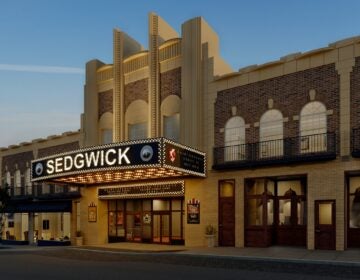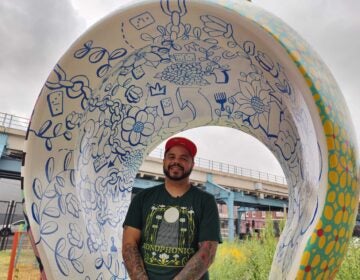President’s House balances noble image with true picture
After eight years of controversy, a commemorative installation where the first White House once stood is open.
“The President’s House: Freedom and Slavery in the Making of a New Nation” now welcomes visitors on Independence Mall near the Liberty Bell.
The struggle was over how to reconcile the location of the first presidential administration with the fact that George Washington was a slaveholder. On one side were historians who did not want the presidency of Washington overwhelmed by his status as slave owner. On the other were activists who saw an opportunity to link the American legacy of slavery directly with its origin.
More coverage:
Allen’s Lane Blog: Mass’ah Washington’s House
Previously: A president and his property
NPR coverage of the opening
“Those are the two extremes, and someplace down the middle there was a medium,” said project director Roz McPherson. “I don’t want to say a happy medium, but that is one of those things people will debate from now to eternity.”
In his speech at the ribbon cutting, Mayor Michael Nutter explained to a crowd of a thousand that President Washington ensured his slaves could not go free by exploiting a loophole in a Pennsylvania abolition law.
At the time, the law allowed any slave in Pennsylvania to go free after six months. Washington was among many landowners who would rotate slaves between his Philadelphia home and his estate in Virginia so that no single slave would be in Pennsylvania for more than six months at a time.
He also signed the Fugitive Slave Act, which allowed slave owners to hunt down their escaped property.
Two of Washington’s slaves — Hercules and Oney Judge — successfully escaped from the President’s House.
Michael Coard chalks up the President’s House installation as a victory. He led an activist group that force the National Park Service to create a slave-heavy message.
“Did I get what I want? Generally, yes. It’s a start,” said Coard at the opening. “I didn’t get everything I wanted, because if I did it would be called the Nat Turner Revolutionary Center. But that’s not going to happen.”
Turner was the leader of a 18th-century slave rebellion in Virginia.
The President’s House is a brick and steel structure of partial walls with no doors and no roof — it is open to the public day and night. On one side is a granite wall carved with the names of Washington’s nine slaves, looking not unlike a war memorial.
WHYY is your source for fact-based, in-depth journalism and information. As a nonprofit organization, we rely on financial support from readers like you. Please give today.




